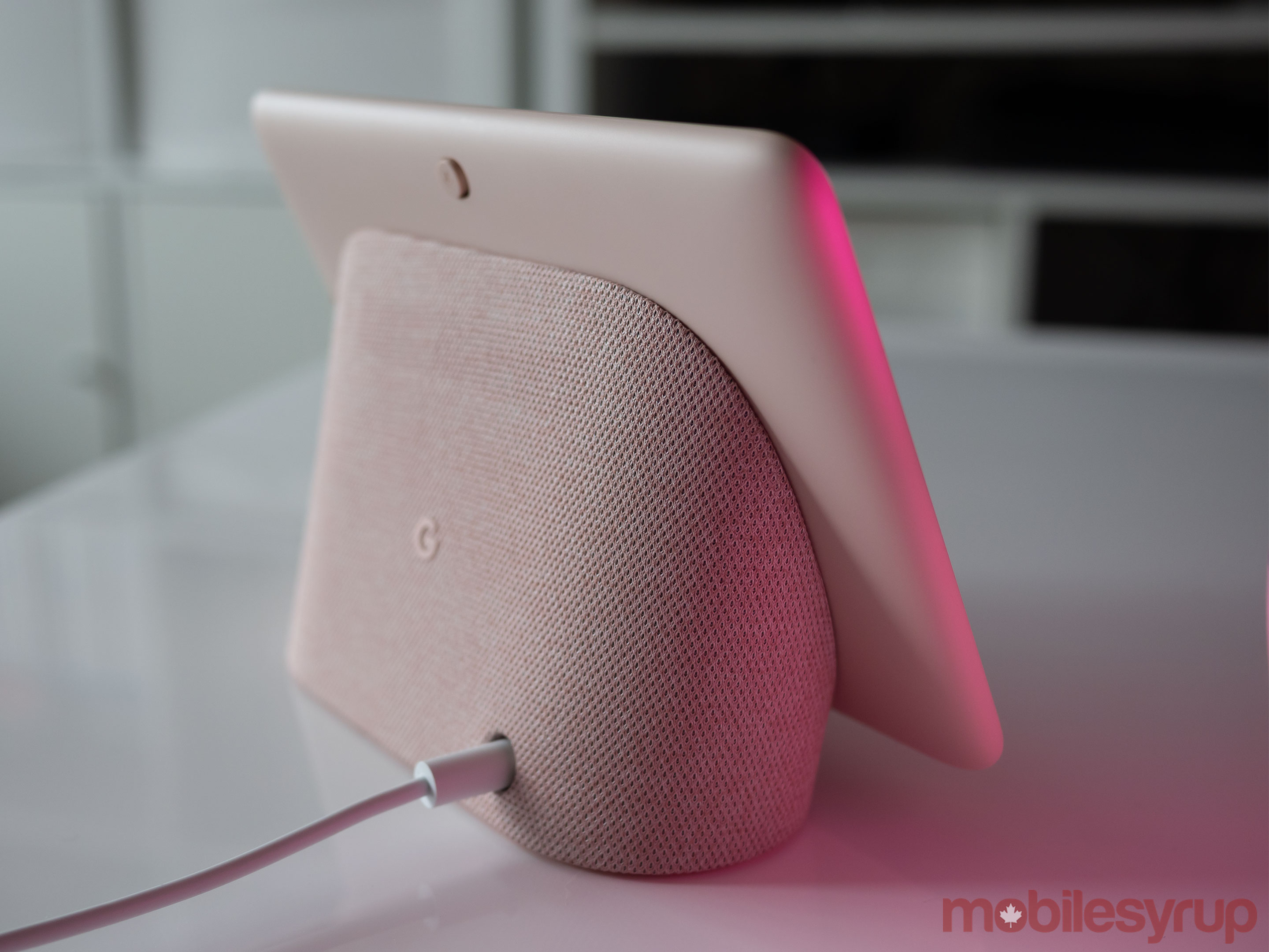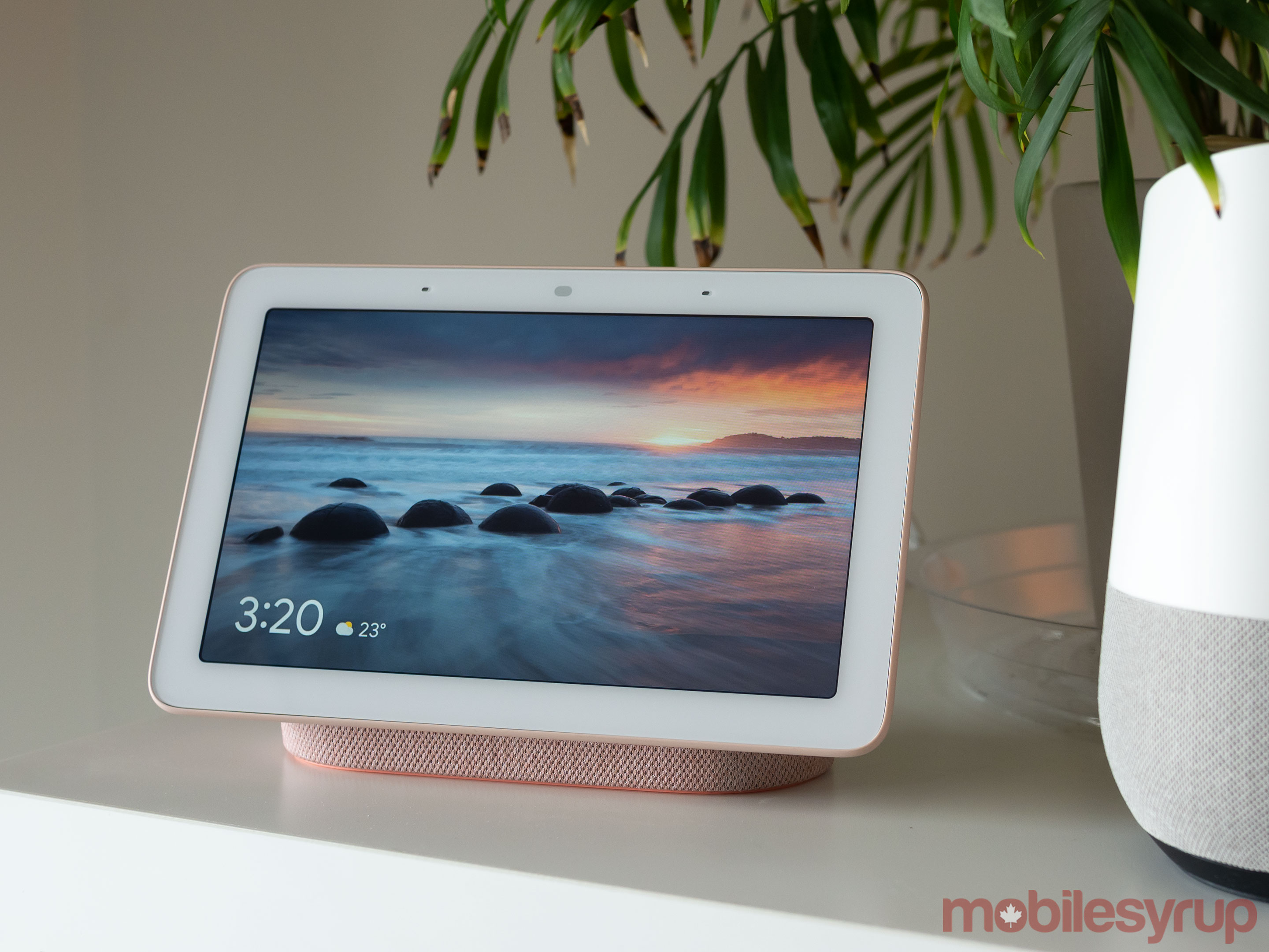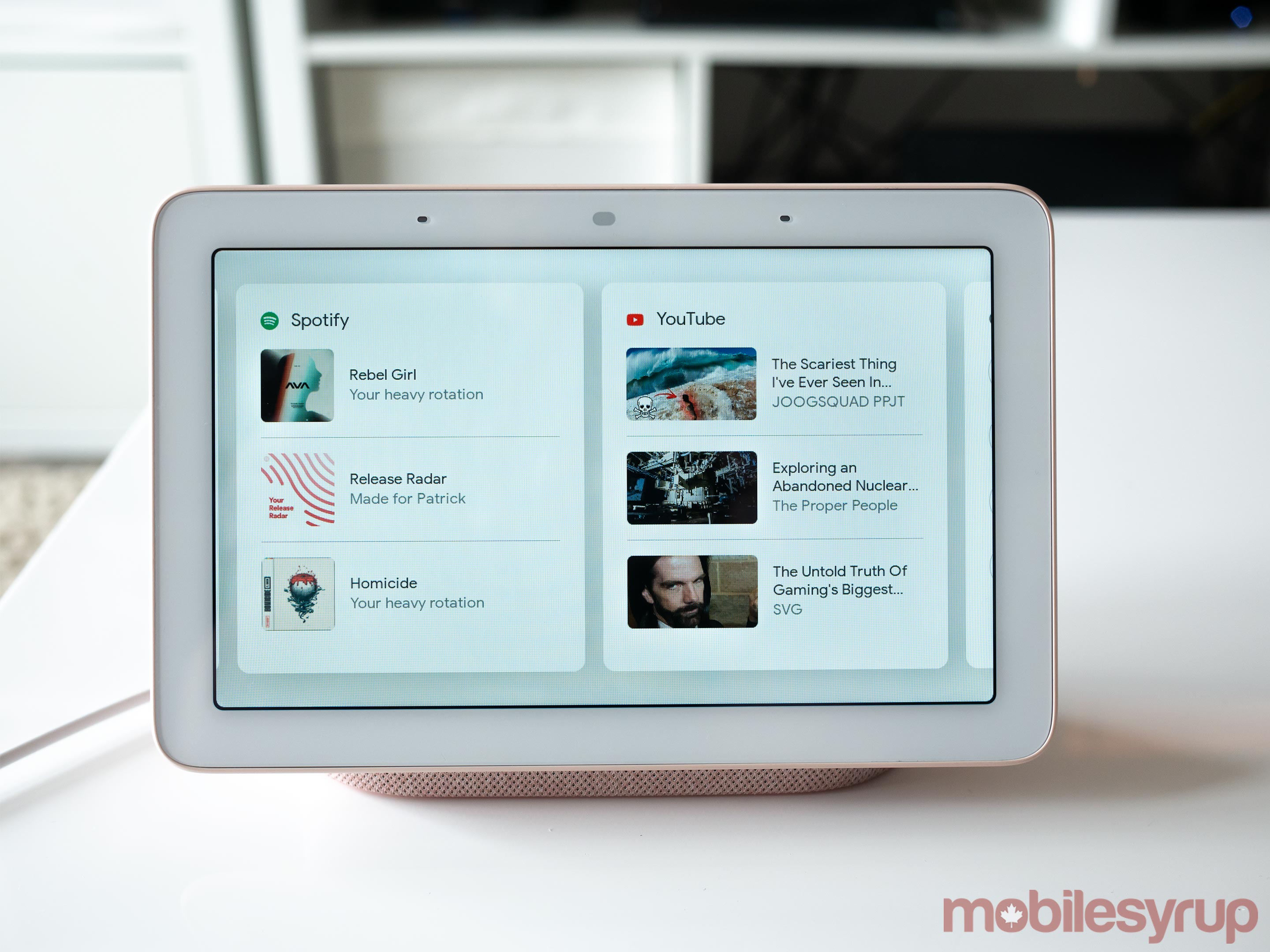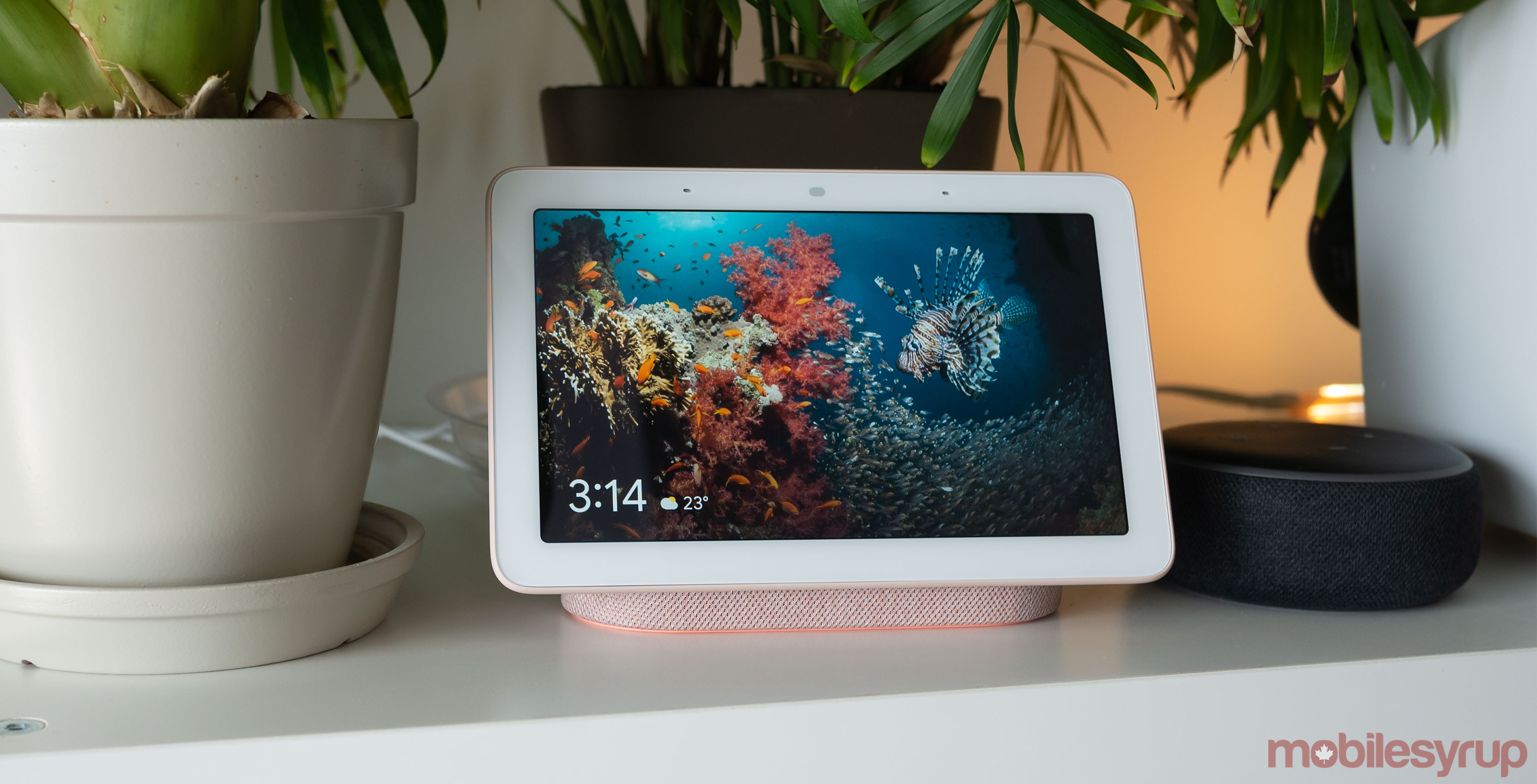
The Pros
- Looks great
- Display is actually useful
- Easy to setup
The Cons
- There are better sounding smart home speakers
- Could be too pricey for some
- You can't Cast Netflix
I’ve been waiting since last October for Google’s Home Hub to make its way to Canada.
Now, the smart home device is finally here under a new moniker — the Nest Hub.
Ever since I first caught a glimpse of Amazon’s Echo Show back in 2017, I’ve been intrigued by the concept of a digital assistant that you can interact with via a touch screen and voice commands.
While the Echo Show features impressive sound quality, it was ultimately a disappointment in nearly every category and is extremely limited in the video platforms it’s compatible with. Google’s Nest Hub, on the other hand, is overall an impressive smart home device
That said, the similarities between the Echo Show and the Nest Hub are uncanny at times. Let’s get into it.
The look
If you’ve used a Google Home device in the past, you’ll be familiar with the look of the Nest Hub. The rear of the voice-activated assistant features a fabric cover that comes in ‘Chalk,’ ‘Charcoal,’ ‘Aqua,’ or ‘Sand,’ the pinkish colour that Google sent MobileSyrup for this review.
The Nest Hub itself is smaller than I expected, with it measuring in at 178.5 x 118 x 67.3mm, along with a 7-inch 1024 x 600-pixel resolution display with a 169.5ppi.
The Hub is also light, coming in at only 480g. The overall size of the smart home device is surprising, particularly when placed beside the bulky 2nd generation Echo Show and its rather substantial 10.1-inch screen.

Though some might take issue with the smaller display, this also allows the Nest Hub to fit more comfortably on a bedroom side table or kitchen counter. Moreover, I’ve always felt the $229 CAD Echo Show’s display size was overkill, given the smart home device’s purpose. I’d rather have a smaller voice-activated assistant with a screen that blends in with my home’s decor, than one with a larger display that feels out of place in my kitchen or living room.
The Hub also sports ambient light and colour sensors embedded into the front along the top edge of its screen, allowing the screen’s colour temperature and brightness to shift to match the Nest Hub’s surroundings. This feature generally works great and is similar to the True Tone technology included in Apple’s iPad Pro (2019) and MacBook Pro (2018/2019).
Regardless of where I placed the Hub, this helped it fade into the background of my apartment’s decor far more than I expected it would.
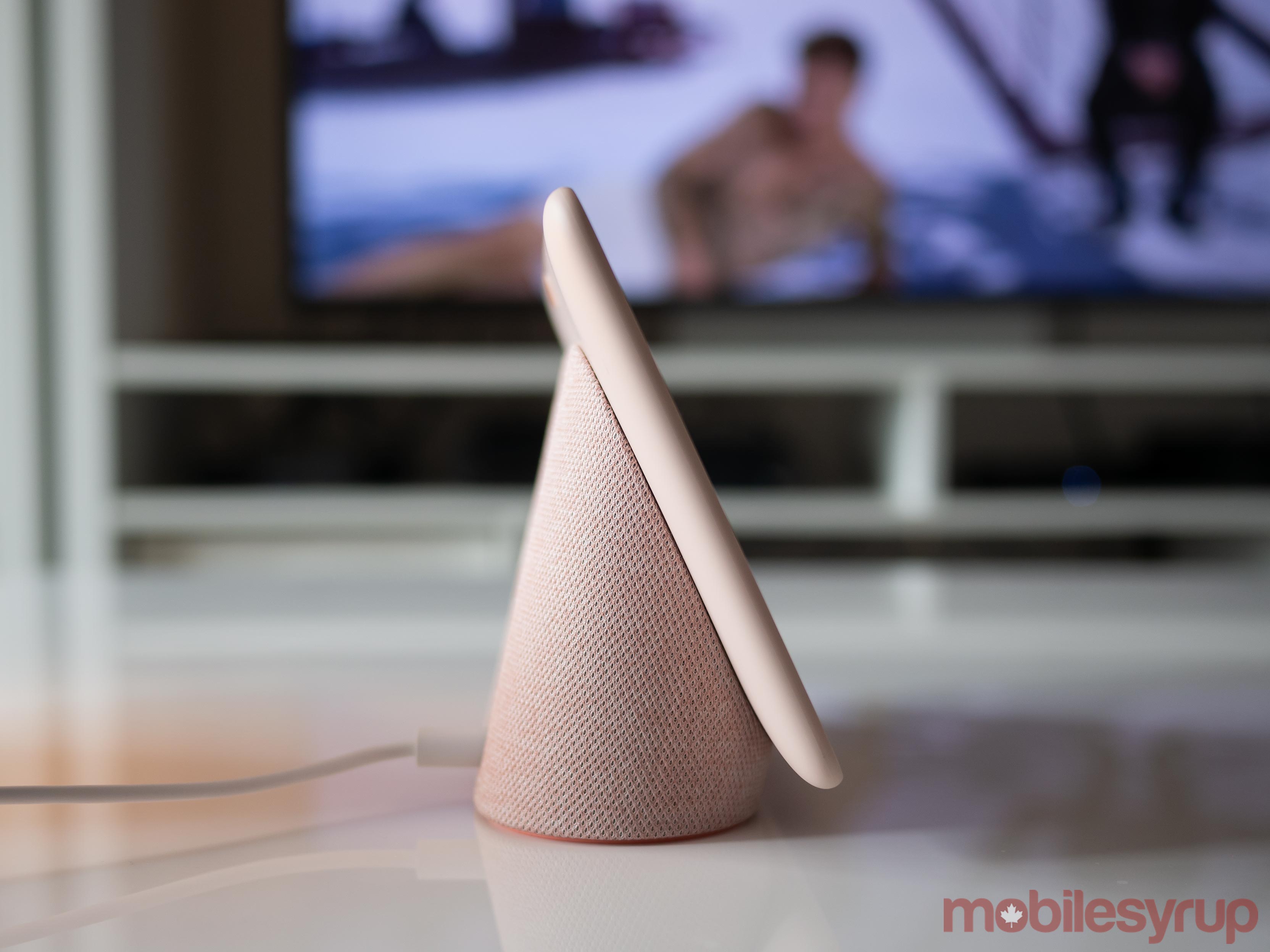
Regarding quality, the Nest Hub’s display is decent given its purpose. The screen features vibrant colours and is crisp despite being slightly under high-definition. Its 1024 x 600 pixel resolution isn’t quite HD, which could be an issue for some. In comparison, the 2nd-generation Echo Show’s screen resolution comes in at a higher 1280 x 800 pixels.
That said, I also wish the Hub’s the screen could be removed from its speaker and carried around like Lenovo’s Alexa-powered Smart Tab tablet.
Other notable Nest Hub specs include Bluetooth 5.0, Google Assistant, almost full Google Cast support (more on this later), two sensitive far-field microphones, a ‘full-range speaker’ and finally, a physical mute switch that privacy-conscious users will be fond of.
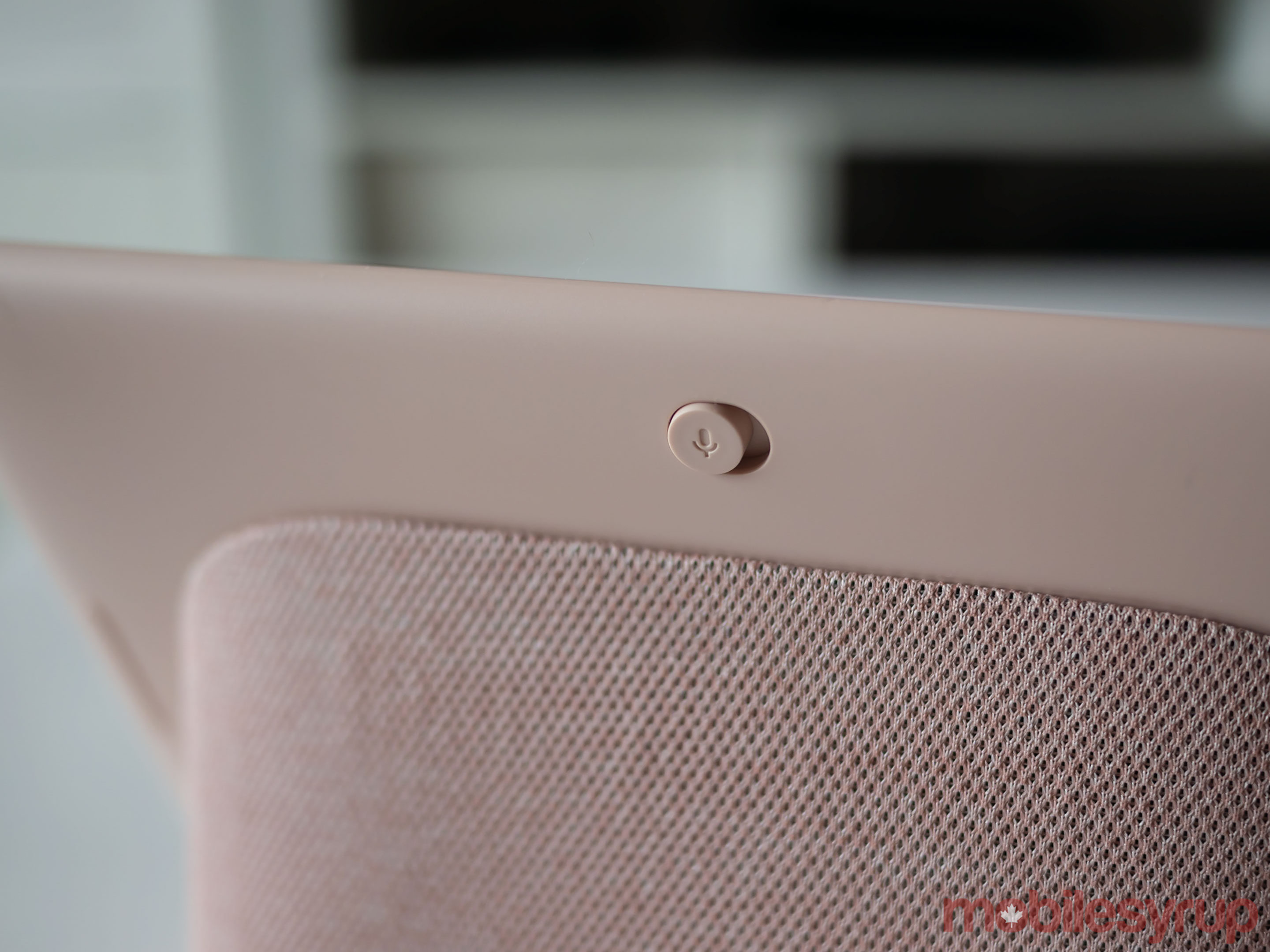
On the topic of privacy, the Nest Hub doesn’t feature a camera like the 2nd-generation Echo Show or Echo Spot. This means if video calls via Google Duo are a feature you’re interested in, the standard Nest Hub isn’t for you. However, you can make Duo voice calls through the Nest Hub. On the other hand, those concerned about having an always present camera in their home will likely be pleased to know that the Nest Hub doesn’t include a camera.
It’s important to note that there are a few other Google Assistant enabled smart displays available in Canada that do feature a built-in webcam for Duo video calling.
Decent sound quality
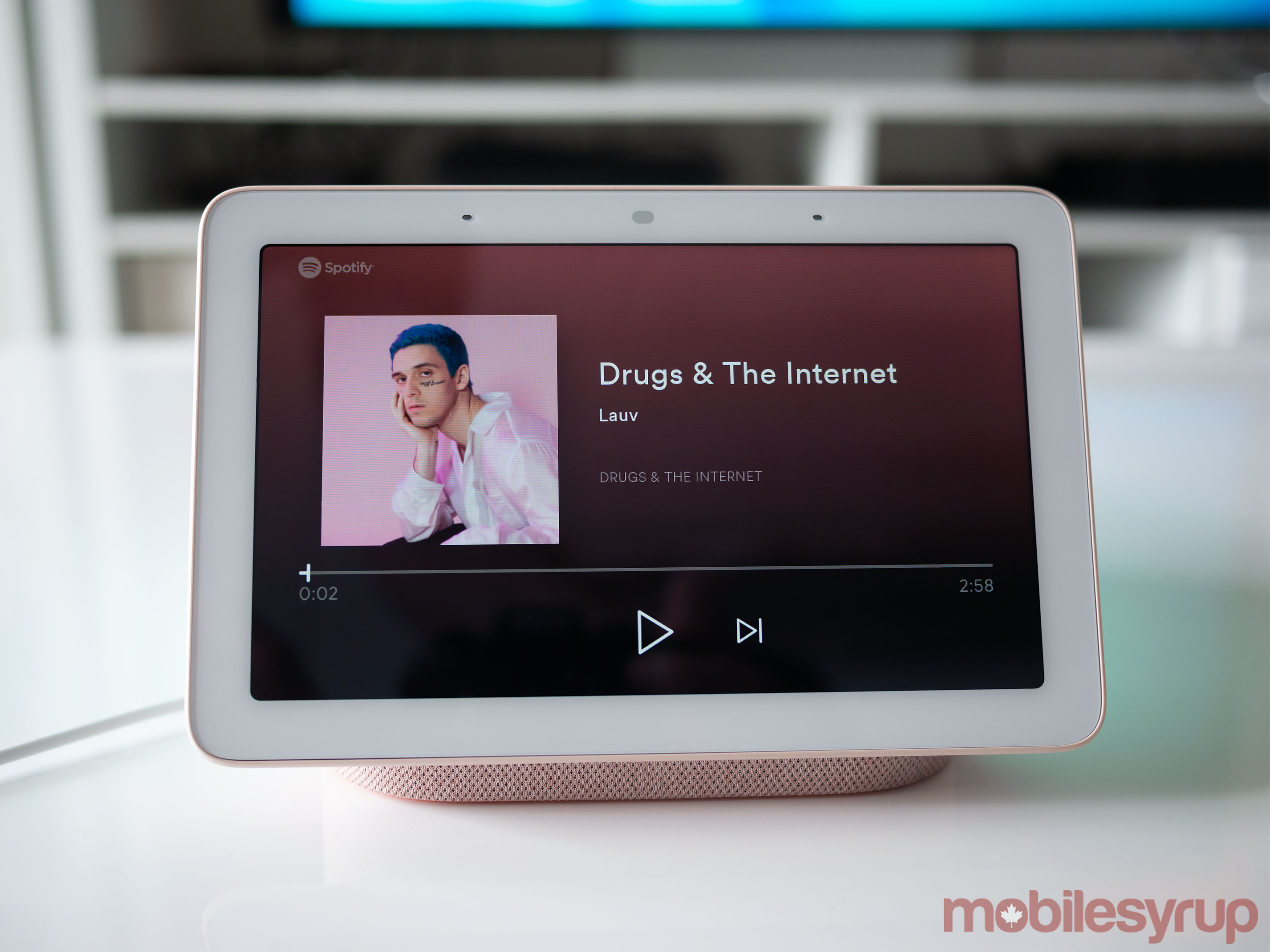
Though this isn’t the case for everyone, beyond controlling my apartment’s array Philips Hue Lights and other smart home devices like iRobot’s Rooma i7+ and Nanoleaf’s Light Panels, I primarily used the Nest Hub to listen to music.
Thankfully the Nest Hub’s sound quality is far better than the dismal Google Home Mini. With that in mind though, the Hub lacks the bass featured in the standard Google Home and doesn’t come close to pumping out music that sounds as great as the pricey Google Home Max.
It’s likely the Nest Hub Max aims to fill that role as far as Google is concerned, but unfortunately, that device isn’t yet available in Canada. Similar to the Home Max, the Hub Max will probably make its way to Canada at some point in the next few months.
Even the 2nd-generation Echo and Echo Show feature better quality sound when compared to the Hub, with both smart home speakers surpassing the Nest Hub in this category by a significant margin.
With this in mind, the Nest Hub’s sound isn’t terrible. Whether I was listening to Blink 182’s Blame It On My Youth, Lauv’s Drugs & the Internet or Alexisonfire’s Complicit, music sounded decent, though there’s an undeniably hollow quality to tracks regardless of the genre.
In general, it’s important to note that there are far better sounding digital assistant devices out there. Because of this, if you’re looking for a smart home speaker with excellent audio quality, the Nest Hub might not be for you.
What the display can actually be used for
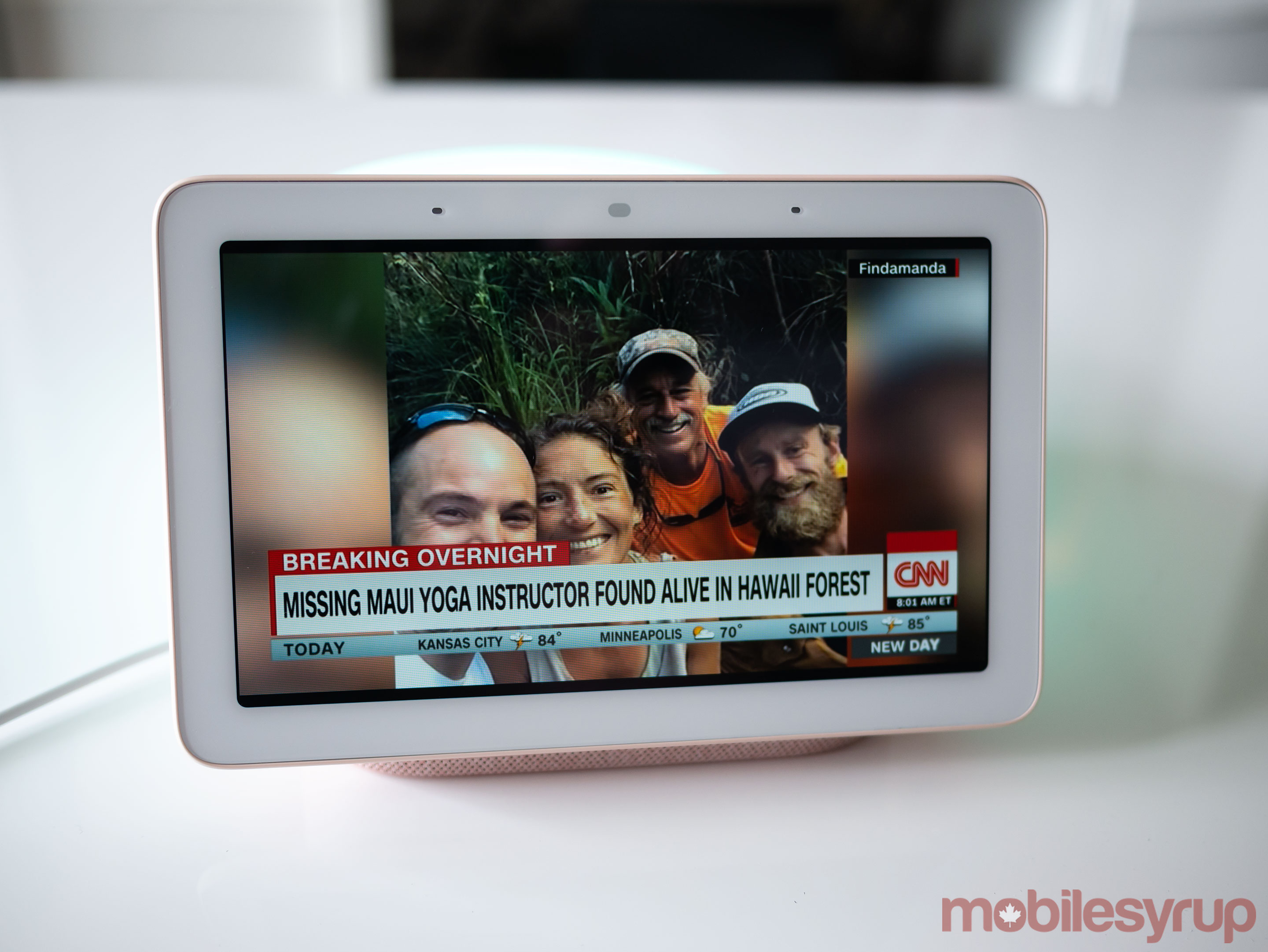
The number of things you can do with the Nest Hub’s display is where it truly shines. Unlike with the Echo Show, the screen has a purpose thanks to the still-limited Cast support and deep integration with Google’s various apps and services.
If you’re watching a YouTube video on your phone or TV, you’re able to cast that same content directly to the Nest Hub. I found this convenient for when I needed to do something in my kitchen like washing the dishes, and still wanted to continue watching a specific YouTube video I started on my TV or smartphone. Of course, I could take my phone into the kitchen and keep watching the video this way as well.
There are surprising limitations to this functionality, though. For instance, it’s not possible to cast Netflix to the Nest Hub for some reason. Other features like Casting podcasts through Pocket Casts does work, however.
You can also use the display to control your smart home devices, similar to Amazon’s Echo Show. All of my Hue lights, as well as my other smart home devices like smart plugs, appear in a clear, easy to navigate list divided by rooms.
Just like with any Google Home product, you can also control these devices with voice commands like, “Google, turn on my bedroom lights,” or, “Google, turn on the ‘mood maker.'”
The best part of the Nest Hub is it’s integrated with Google’s ecosystem. This means I can ask the device about the next event on my Google Calendar, and the Hub will read out his schedule. If you enable Voice Match, these results will be personalized and based on your schedule.
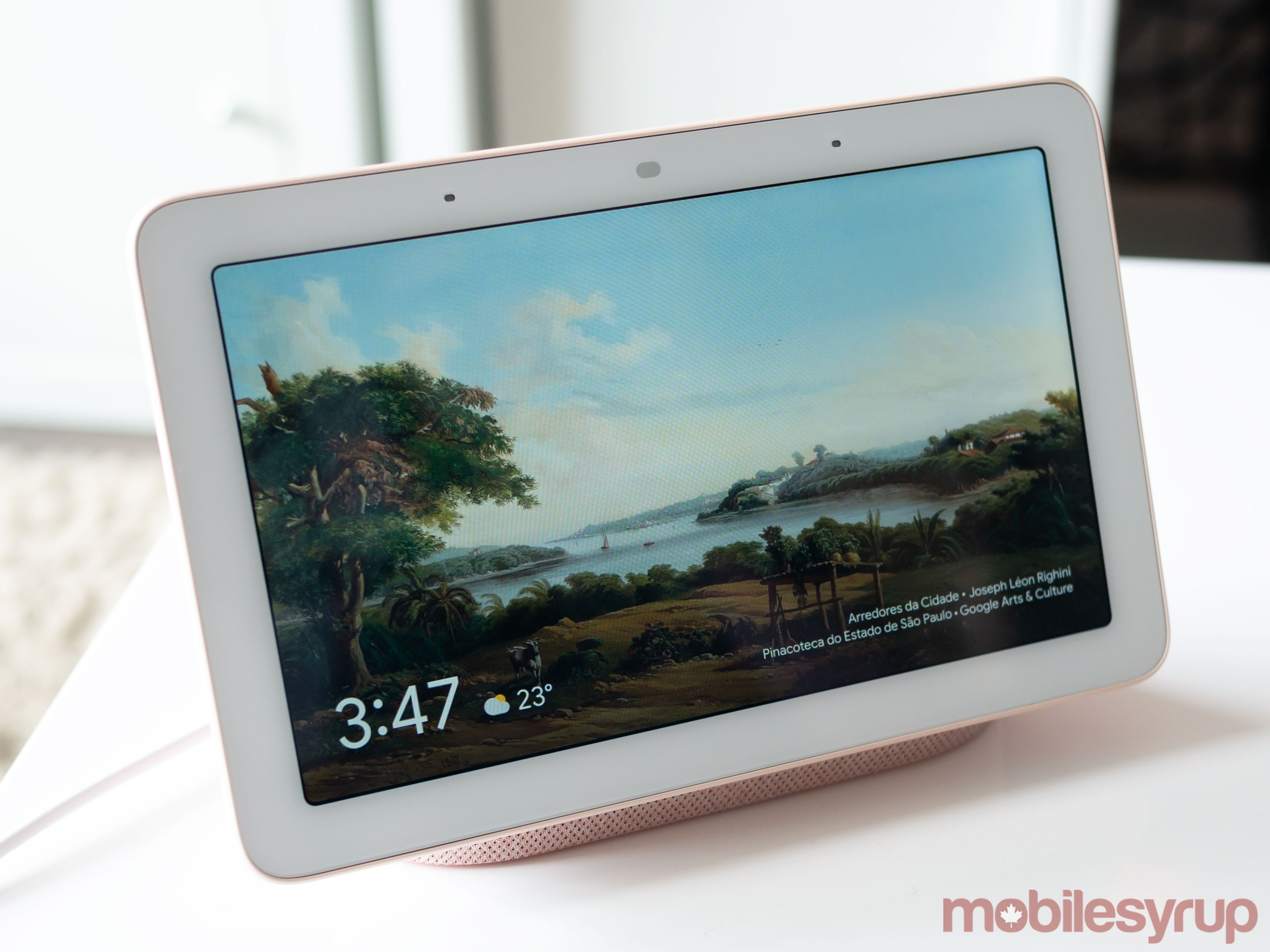
You can even ask the Nest Hub for specific videos related to questions. For instance, if you say, “Hey Google, how do I make spaghetti?,” it will pull up a video sourced from YouTube explaining how to do precisely that. It’s also possible to view a connected Nest camera’s live video feed on the Hub, though this isn’t a feature I tested out.
Pretty much every Google platform you can think of, including Google Maps, can display on the Nest Hub’s screen. The fact that Google Assistant is a more capable digital assistant when compared to Amazon’s Alexa, primarily thanks to Google’s search prowess, makes the Nest Hub a vastly more useful device than the Echo Show.
The only downside to the display is the fact that the Hub’s operating system is a little challenging to navigate at first. It took a while to get the hang of it, but once I realized you swipe to the left to move between screens, the experience started to make more sense.
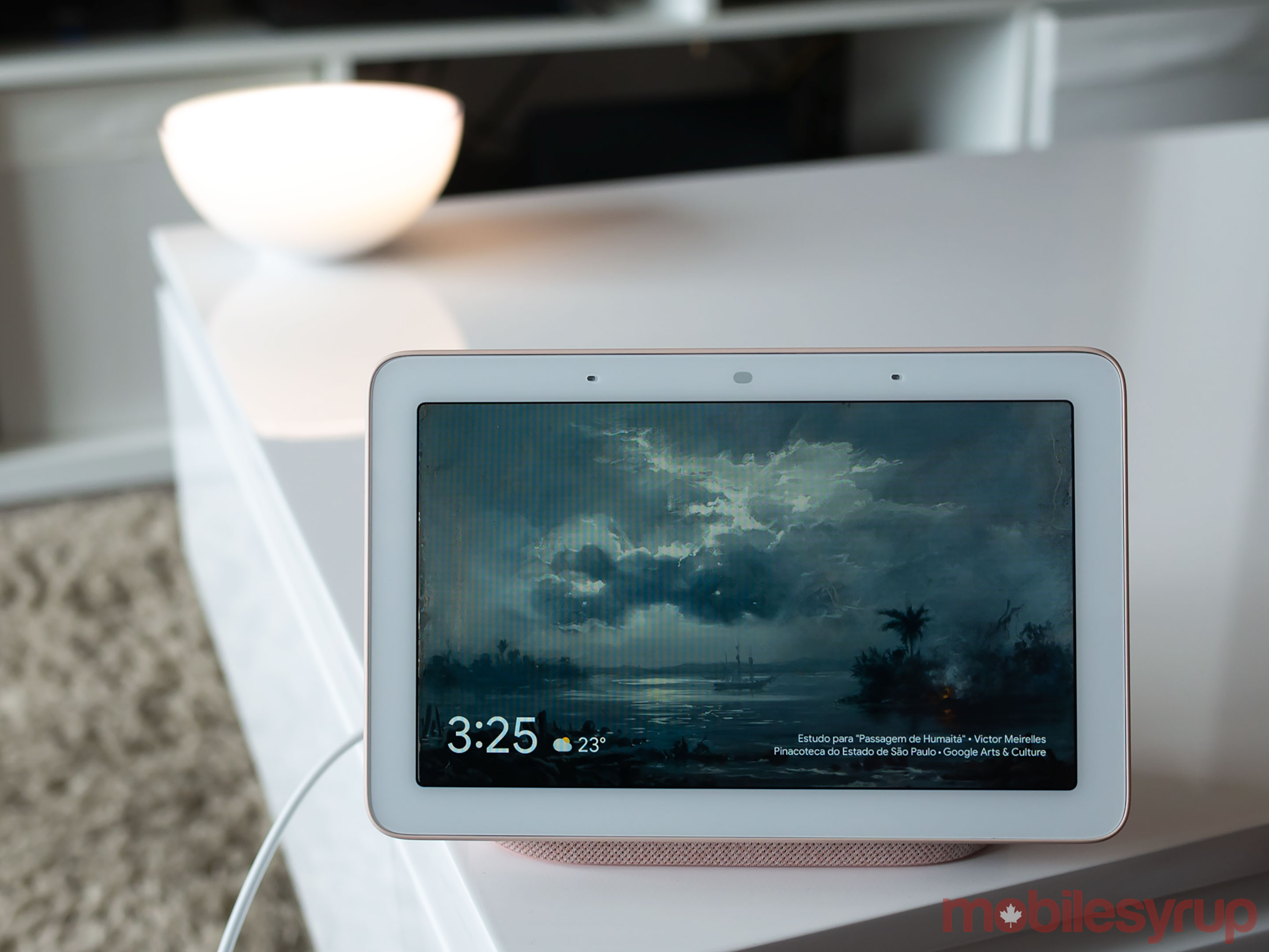
When not using the device, users can set the Nest Hub’s display to show a collection of art, a few preset backgrounds created by Google, or images from your Google Photos account. Of course, you can also set it to show the time in a variety of clock faces as well, which is particularly useful if you’re using the Hub as an alarm clock.
I’m also fond of the predictive nature of the Nest Hub. Google Assistant can predict the information you’ll need before you even know you need it and displays it on the Hub’s screen. For example, if there are upcoming events in my Google Calendar, the Nest Hub automatically shows them at roughly 9pm to 10pm the night before.
Further, if I have a scheduled Keep note, the Hub automatically displays it for me. Of course, similar to most of the Home Hub’s best features, this functionality only works if you use Google’s services and apps.
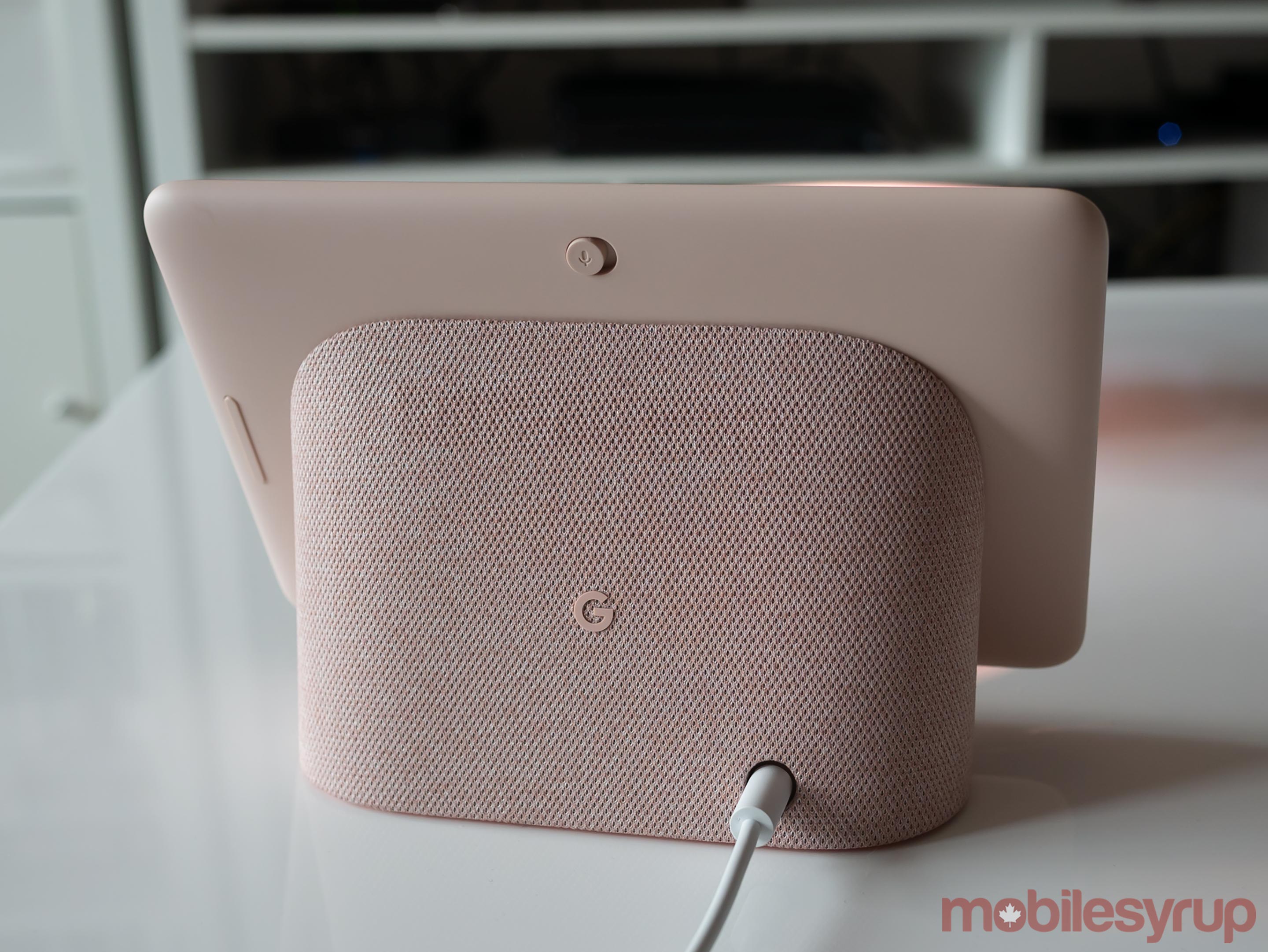
It’s also worth mentioning that the Nest Hub is straightforward to set up. You only need to navigate to the Home app and add a new device. The app then walks you through the setup process, and you’ll be up and running in a matter of minutes.
Though Google’s Home app, the Hub is compatible with Android, iOS, Mac, Windows and Chromebooks. For this review, I spent most of my time using the Nest Hub with my iPhone XS Max.
If you want smart home device with a screen, the Nest Hub is your best option
Most people probably don't need a smart home device with a built-in display, but for those that do, the Nest Hub is by far the best option out there thanks to its Google Assistant integration.
While I rarely use the Echo Show I have in my kitchen because the device is limited in what it's actually capable of doing and displaying on its screen, the Hub features direct integration with Google's services and apps, giving it a direct line to Google Assistant. This makes the Nest Hub significantly more capable and useful.
The Nest Hub is available in Canada starting on May 28th for $169 CAD.
"While I rarely use the Echo Show I have in my kitchen because the device is limited in what it's actually capable of doing, the Nest Hub features direct integration with Google's services and apps..."
MobileSyrup may earn a commission from purchases made via our links, which helps fund the journalism we provide free on our website. These links do not influence our editorial content. Support us here.

